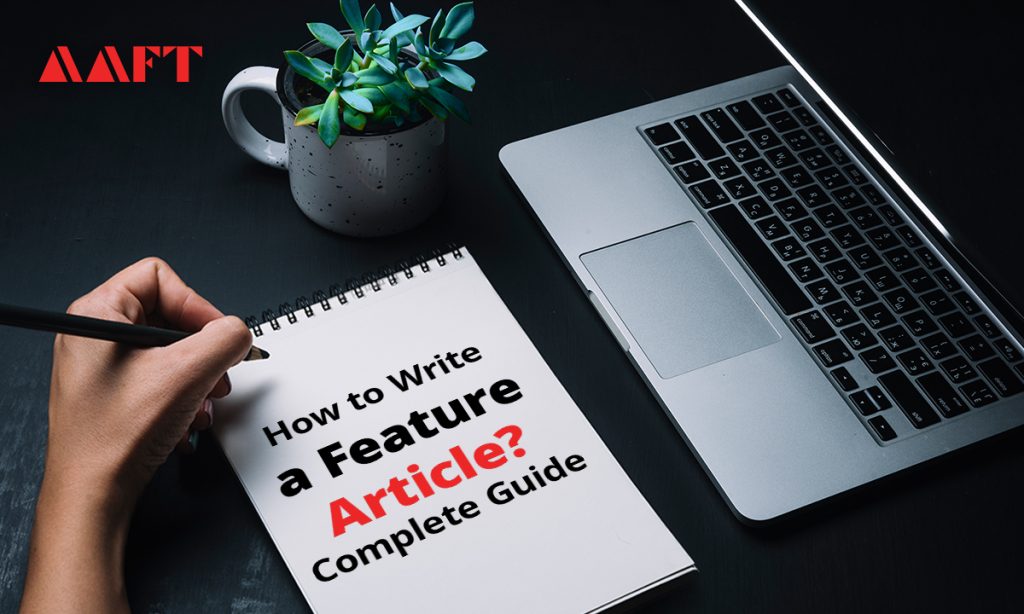How to Write a Feature Article: A Step-by-Step Guide
Feature stories are one of the most crucial forms of writing these days, we can find feature articles and examples in many news websites, blog websites, etc. While writing a feature article a lot of things should be kept in mind as well.
Feature stories are a powerful form of journalism, allowing writers to delve deeper into subjects and explore the human element behind the headlines. Whether you’re a budding journalist or an aspiring storyteller, mastering the art of feature story writing is essential for engaging your readers and conveying meaningful narratives. In this blog, you’ll find the process of writing a feature article, feature article writing tips, feature article elements, etc.
The process of writing a compelling feature story, offering valuable tips, real-world examples, and a solid structure to help you craft stories that captivate and resonate with your audience.
Read Also: Top 5 Strategies for Long-Term Success in Journalism Careers
Understanding the Essence of a Feature Story
Before we dive into the practical aspects, let’s clarify what a feature story is and what sets it apart from news reporting. While news articles focus on delivering facts and information concisely, feature stories are all about storytelling. They go beyond the “who, what, when, where, and why” to explore the “how” and “why” in depth. Feature stories aim to engage readers emotionally, making them care about the subject, and often, they offer a unique perspective or angle on a topic.
Tips and tricks for writing a Feature article
In the beginning, many people can find difficulty in writing a feature, but here we have especially discussed some special tips and tricks for writing a feature article. So here are some Feature article writing tips and tricks: –
Do you want free career counseling?
Ignite Your Ambitions- Seize the Opportunity for a Free Career Counseling Session.
- 30+ Years in Education
- 250+ Faculties
- 30K+ Alumni Network
- 10th in World Ranking
- 1000+ Celebrity
- 120+ Countries Students Enrolled
Read Also: How Fact Checking Is Strengthening Trust In News Reporting
1. Choose an Interesting Angle:
The first step in feature story writing is selecting a unique and compelling angle or theme for your story. Look for an aspect of the topic that hasn’t been explored widely, or find a fresh perspective that can pique readers’ curiosity.
2. Conduct Thorough Research:
Solid research is the foundation of any feature story. Dive deep into your subject matter, interview relevant sources, and gather as much information as possible. Understand your subject inside out to present a comprehensive and accurate portrayal.
Book Now →
3. Humanize Your Story:
Feature stories often revolve around people, their experiences, and their emotions. Humanize your narrative by introducing relatable characters and sharing their stories, struggles, and triumphs.
4. Create a Strong Lead:
Your opening paragraph, or lead, should be attention-grabbing and set the tone for the entire story. Engage your readers from the start with an anecdote, a thought-provoking question, or a vivid description.
5. Structure Your Story:
Feature stories typically follow a narrative structure with a beginning, middle, and end. The beginning introduces the topic and engages the reader, the middle explores the depth of the subject, and the end provides closure or leaves readers with something to ponder.
Do you want free career counseling?
Ignite Your Ambitions- Seize the Opportunity for a Free Career Counseling Session.6. Use Descriptive Language:
Paint a vivid picture with your words. Utilize descriptive language and sensory details to transport your readers into the world you’re depicting.
7. Incorporate Quotes and Anecdotes:
Quotes from interviews and anecdotes from your research can breathe life into your story. They add authenticity and provide insights from real people.
8. Engage Emotionally:
Feature stories should evoke emotions. Whether it’s empathy, curiosity, joy, or sadness, aim to connect with your readers on a personal level.
Read Also: The Ever-Evolving World Of Journalism: Unveiling Truths and Shaping Perspectives
Examples of Feature Stories
Here we are describing some of the feature articles examples which are as follows:-
“Finding Beauty Amidst Chaos: The Life of a Street Artist”
This feature story delves into the world of a street artist who uses urban decay as his canvas, turning neglected spaces into works of art. It explores his journey, motivations, and the impact of his art on the community.
“The Healing Power of Music: A Veteran’s Journey to Recovery”
This story follows a military veteran battling post-traumatic stress disorder and how his passion for music became a lifeline for healing. It intertwines personal anecdotes, interviews, and the therapeutic role of music.
“Wildlife Conservation Heroes: Rescuing Endangered Species, One Baby Animal at a Time”
In this feature story, readers are introduced to a group of dedicated individuals working tirelessly to rescue and rehabilitate endangered baby animals. It showcases their passion, challenges, and heartwarming success stories.
What should be the feature a Feature article structure?
Read Also: What is The Difference Between A Journalist and A Reporter?
Structure of a Feature Story
A well-structured feature story typically follows this format:
Headline: A catchy and concise title that captures the essence of the story. This is always written at the top of the story.
Lead: A captivating opening paragraph that hooks the reader. The first 3 sentences of any story that explains 5sW & 1H are known as lead.
Introduction: Provides context and introduces the subject. Lead is also a part of the introduction itself.
Body: The main narrative section that explores the topic in depth, including interviews, anecdotes, and background information.
Conclusion: Wraps up the story, offers insights, or leaves the reader with something to ponder.
Additional Information: This may include additional resources, author information, or references.
Conclusion
Read Also: Benefits and Jobs After a MAJMC Degree
Writing a feature article is a blend of journalistic skills and storytelling artistry. By choosing a compelling angle, conducting thorough research, and structuring your story effectively, you can create feature stories that captivate and resonate with your readers. AAFT also provides many courses related to journalism and mass communication which grooms a person to write new articles, and news and learn new skills as well.
Remember that practice is key to honing your feature story writing skills, so don’t be discouraged if it takes time to perfect your craft. With dedication and creativity, you’ll be able to craft feature stories that leave a lasting impact on your audience.
FAQ
What are the characteristics of a good feature article?
A good feature article is well-written, engaging, and informative. It should tell a story that is interesting to the reader and that sheds light on an important issue.
Why is it important to write feature articles?
Feature articles can inform and entertain readers. They can also help to shed light on important issues and to promote understanding and empathy.
What are the challenges of writing a feature article?
The challenges of writing a feature article can vary depending on the topic and the audience. However, some common challenges include finding a good angle for the story, gathering accurate information, and writing in a clear and concise style.

Aaditya Kanchan is a skilled Content Writer and Digital Marketer with experience of 5+ years and a focus on diverse subjects and content like Journalism, Digital Marketing, Law and sports etc. He also has a special interest in photography, videography, and retention marketing. Aaditya writes in simple language where complex information can be delivered to the audience in a creative way.






